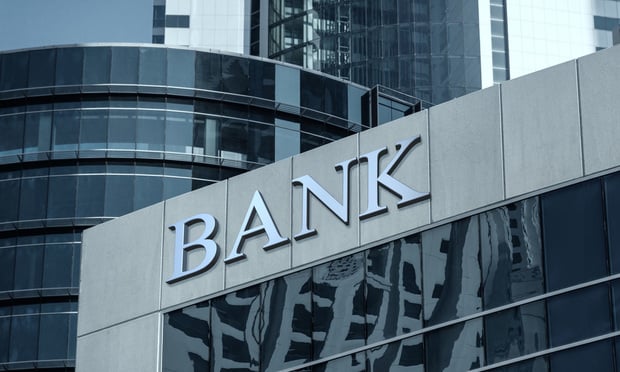SAN FRANCISCO—In a recent JLL report, seven West Coast markets were ranked in the U.S. Top 10 for High Tech VC Funding. Among them was Northern California/Bay Area. We caught up with Steffen Kammerer, JLL SVP of the region to discuss what submarkets in the region are being the most impacted by current VC funding, among other things.
GlobeSt.com: How will VC funding impact the pending correction in office leasing in your market?
Steffen Kammerer: Overall, a slowdown in funding will eventually lead to many startups staying in place or making less aggressive expansion plans as there's more scrutiny on ”burn rates” and establishing and developing positive revenue streams. With new pressure coming from boards on spending, Series A & B companies will be more sensitive to the rising cost of real estate and we will likely see slower growth in that sector. Later stage companies with strong balance sheets will have a bit more flexibility to grow their footprint given the existing capital situation, but they too will be subject to the analytical eyes of their respective boards of directors. Bottom line, we anticipate growth in the Bay Area, but at a slower rate than we've seen over the past few years.
GlobeSt.com: What submarkets in your region are being the most impacted by the current VC funding?
Kammerer: Premier submarkets like Palo Alto, Mountain View, San Mateo, Redwood City, and San Francisco's SoMa submarket will likely be the first to see the most impact. Those markets that are well served by public transit (BART, CalTrain) have historically been the most sought after by startups and in turn commanded some of the highest asking rents. As the consideration of cost weighs in more heavily on any future real estate decision these primary submarkets may see a slowdown in activity as it becomes more difficult for owners of buildings with premium pricing to keep existing tenants in place and incentivize new companies to relocate to their buildings.
GlobeSt.com: What VC funding trends in your market will we be talking about at this time next year?
Kammerer: Though the immediate future points to a slowdown of venture capital activity, VC's are still raising a considerable amount of capital, both domestically and internationally. We've seen emerging industries spur new demand such as China's interest in self-driving technology and the local auto industry adopting new technologies and thus expanding their R&D footprints in the Bay Area. VC's will continue to fund late-stage companies who have already established a strong user base and proven revenue streams. With the IPO pipeline thin in 2016 thin as a result of poor performance from companies that made their public debut in 2015, investors will be taking longer to fund rounds as they scrutinize term sheets. This will lead to a continued decline in the number of venture-backed deals next year which, in turn, could cool tech growth in 2017. Though funding will be more difficult to come by, those with strong business models and proven track records will likely garner more support and ultimately thrive – thinning the herd will clear the path for the strong to grow.
SAN FRANCISCO—In a recent JLL report, seven West Coast markets were ranked in the U.S. Top 10 for High Tech VC Funding. Among them was Northern California/Bay Area. We caught up with Steffen Kammerer, JLL SVP of the region to discuss what submarkets in the region are being the most impacted by current VC funding, among other things.
GlobeSt.com: How will VC funding impact the pending correction in office leasing in your market?
Steffen Kammerer: Overall, a slowdown in funding will eventually lead to many startups staying in place or making less aggressive expansion plans as there's more scrutiny on ”burn rates” and establishing and developing positive revenue streams. With new pressure coming from boards on spending, Series A & B companies will be more sensitive to the rising cost of real estate and we will likely see slower growth in that sector. Later stage companies with strong balance sheets will have a bit more flexibility to grow their footprint given the existing capital situation, but they too will be subject to the analytical eyes of their respective boards of directors. Bottom line, we anticipate growth in the Bay Area, but at a slower rate than we've seen over the past few years.
GlobeSt.com: What submarkets in your region are being the most impacted by the current VC funding?
Kammerer: Premier submarkets like Palo Alto, Mountain View, San Mateo, Redwood City, and San Francisco's SoMa submarket will likely be the first to see the most impact. Those markets that are well served by public transit (BART, CalTrain) have historically been the most sought after by startups and in turn commanded some of the highest asking rents. As the consideration of cost weighs in more heavily on any future real estate decision these primary submarkets may see a slowdown in activity as it becomes more difficult for owners of buildings with premium pricing to keep existing tenants in place and incentivize new companies to relocate to their buildings.
GlobeSt.com: What VC funding trends in your market will we be talking about at this time next year?
Kammerer: Though the immediate future points to a slowdown of venture capital activity, VC's are still raising a considerable amount of capital, both domestically and internationally. We've seen emerging industries spur new demand such as China's interest in self-driving technology and the local auto industry adopting new technologies and thus expanding their R&D footprints in the Bay Area. VC's will continue to fund late-stage companies who have already established a strong user base and proven revenue streams. With the IPO pipeline thin in 2016 thin as a result of poor performance from companies that made their public debut in 2015, investors will be taking longer to fund rounds as they scrutinize term sheets. This will lead to a continued decline in the number of venture-backed deals next year which, in turn, could cool tech growth in 2017. Though funding will be more difficult to come by, those with strong business models and proven track records will likely garner more support and ultimately thrive – thinning the herd will clear the path for the strong to grow.
Continue Reading for Free
Register and gain access to:
- Breaking commercial real estate news and analysis, on-site and via our newsletters and custom alerts
- Educational webcasts, white papers, and ebooks from industry thought leaders
- Critical coverage of the property casualty insurance and financial advisory markets on our other ALM sites, PropertyCasualty360 and ThinkAdvisor
Already have an account? Sign In Now
© 2024 ALM Global, LLC, All Rights Reserved. Request academic re-use from www.copyright.com. All other uses, submit a request to [email protected]. For more information visit Asset & Logo Licensing.









